12.E: Exercises (Part 2)
- Page ID
- 27593
- Classifying Cash Flows. Identify whether each of the following items would appear in the operating, investing, or financing activities section of the statement of cash flows. Briefly explain your answer for each item.
- Cash receipts from the sale of goods
- Cash payments for the purchases of merchandise
- Cash receipts from the issuance of bonds
- Cash payments to shareholders for dividends
- Cash payments to employees
- Cash receipts from the sale of equipment
- Operating Activities Section Using the Indirect Method. The following income statement and current sections of the balance sheet are for Manor Company.
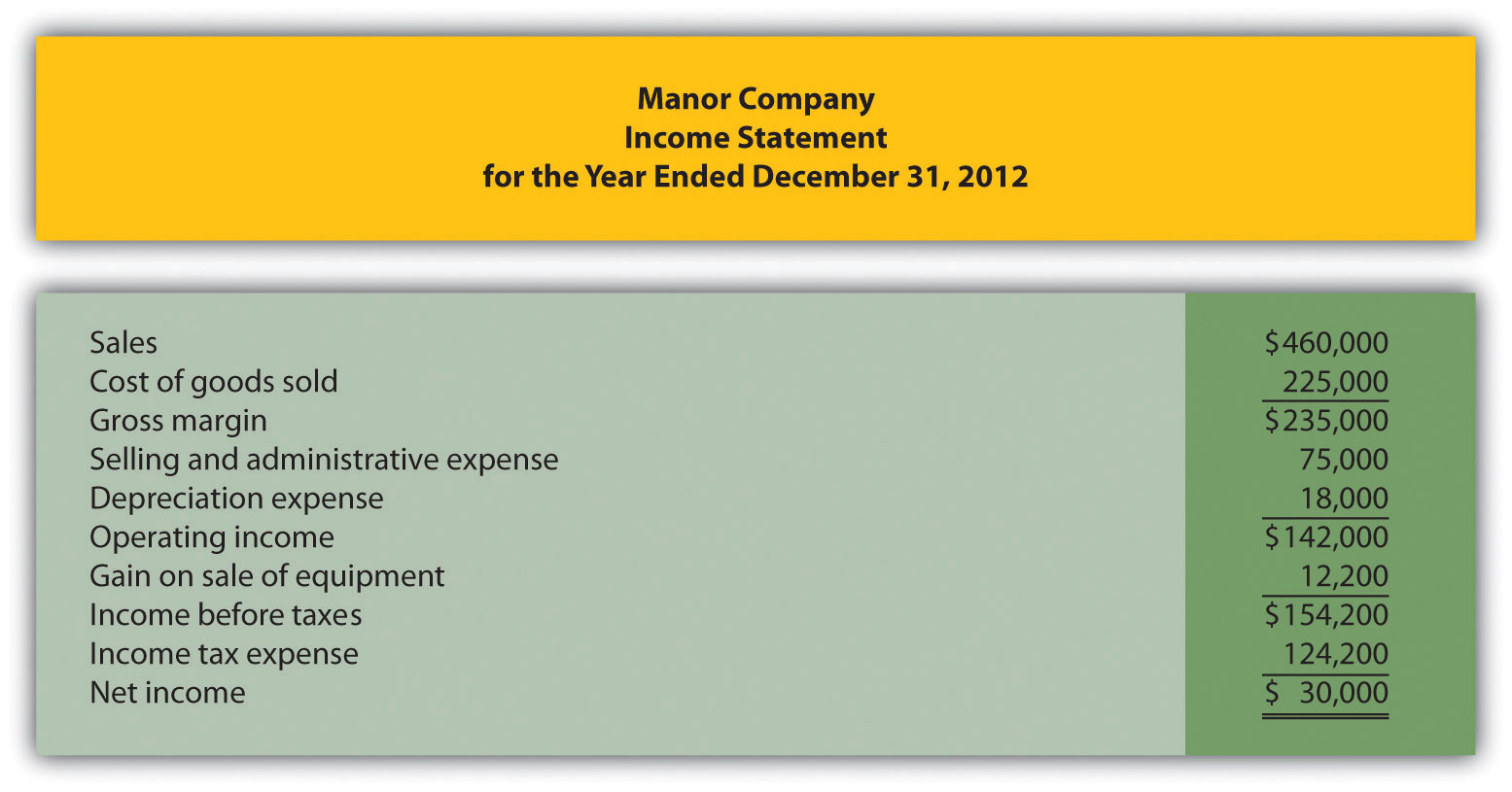
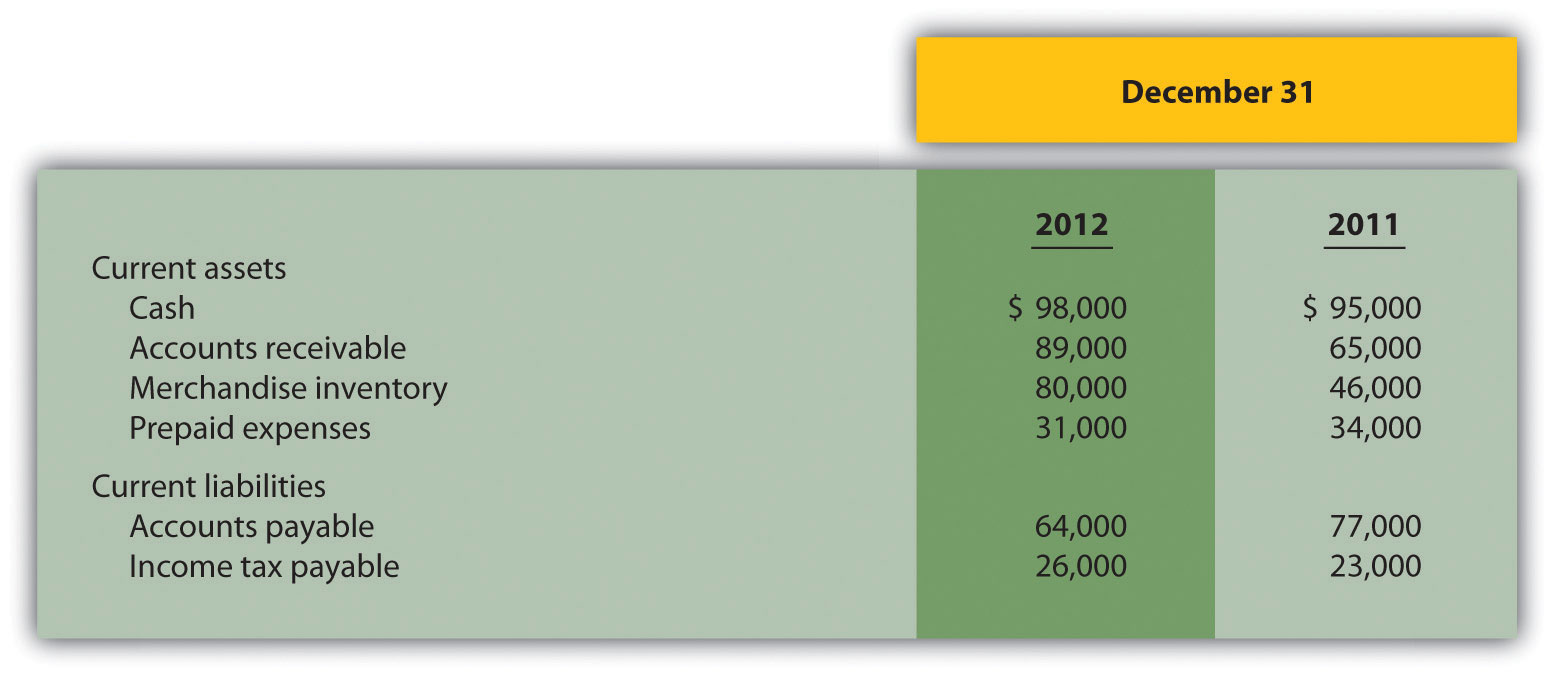
Required:
- Using the indirect method, prepare the operating activities section of the statement of cash flows for Manor Company for the year ended December 31, 2012. Use the format presented in Figure 12.5.
- How much cash was provided by (used by) operating activities? Briefly describe what this amount tells us about the company.
- (Appendix) Operating Activities Section Using the Direct Method. The following income statement and current sections of the balance sheet are for Manor Company (this is the same information as the previous exercise).
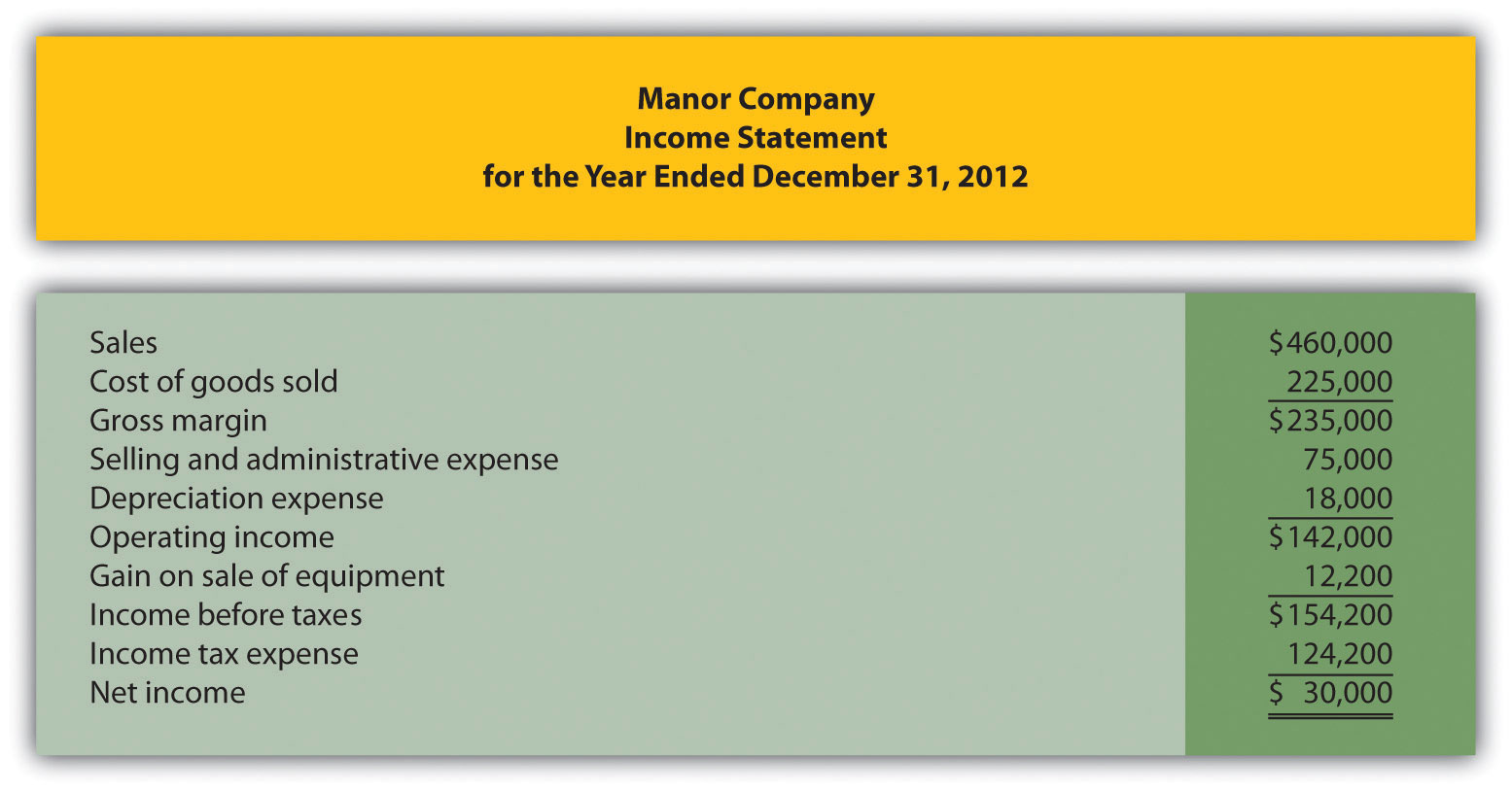
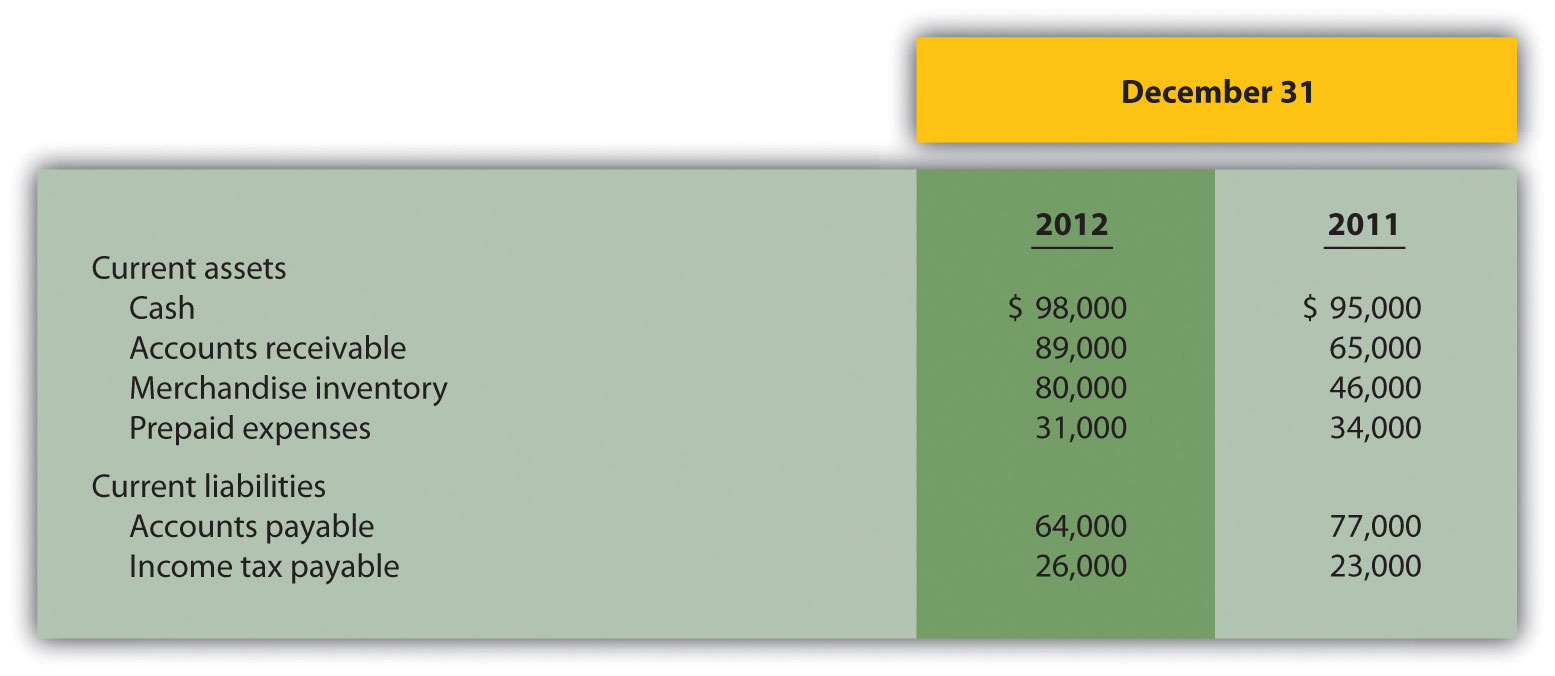
Required:
- Using the direct method, prepare the operating activities section of the statement of cash flows for Manor Company for the year ended December 31, 2012. Use the format presented in Figure 12.12.
- How much cash was provided by (used by) operating activities? Briefly describe what this amount tells us about the company.
- Investing Activities Section. The following information is from the noncurrent asset portion of Gebhardt Company’s balance sheet.
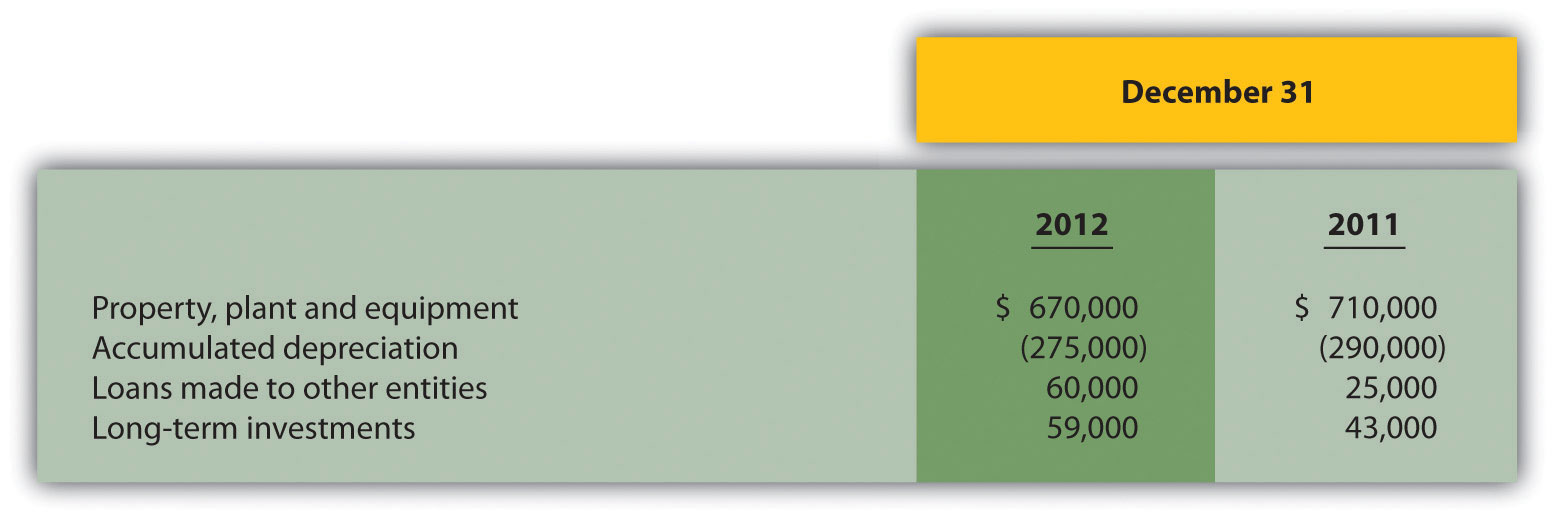
The following activities occurred during 2012:
- Sold equipment with a book value of $4,000 (= $90,000 cost − $86,000 accumulated depreciation) for $9,000 cash and depreciation expense for the year totaled $71,000
- Purchased equipment for $50,000 cash
- Loans totaling $62,000 were made to other entities during the year (Hint: Solve for the principal amount on loans collected during the year.)
- Purchased long-term investments for $16,000 cash
Required:
- Prepare the investing activities section of the statement of cash flows for Gebhardt, Inc., for the year ended December 31, 2012. Use the format presented in Figure 12.6.
- How much cash was provided by (used by) investing activities? Briefly describe what this amount tells us about the company.
- Financing Activities Section. The following information is from the noncurrent liabilities and owners’ equity portions of System, Inc.’s balance sheet.
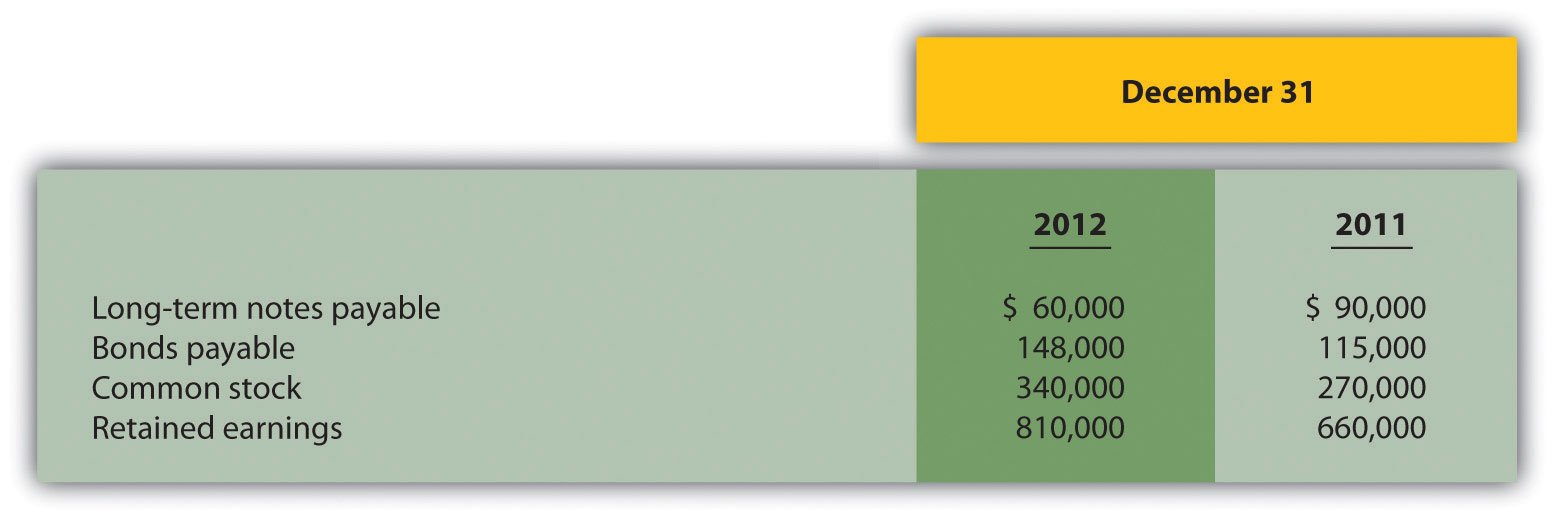
The following activities occurred during 2012:
- Paid principal amount of $70,000 for long-term notes payable
- Received $40,000 for long-term notes payable
- Paid principal amount on bonds totaling $15,000 (Hint: Solve for the proceeds received from the issuance of bonds.)
- Issued common stock for $100,000 cash (Hint: Solve for the amount paid for the repurchase of stock.)
- Earned net income totaling $170,000
- Paid cash dividends totaling $20,000
Required:
- Prepare the financing activities section of the statement of cash flows for System, Inc., for the year ended December 31, 2012. Use the format presented in Figure 12.7.
- How much cash was provided by (used by) financing activities? Briefly describe what this amount tells us about the company.
- Operating Activities Section Using the Indirect Method and Cash Ratios. The following data are for Mills Company.
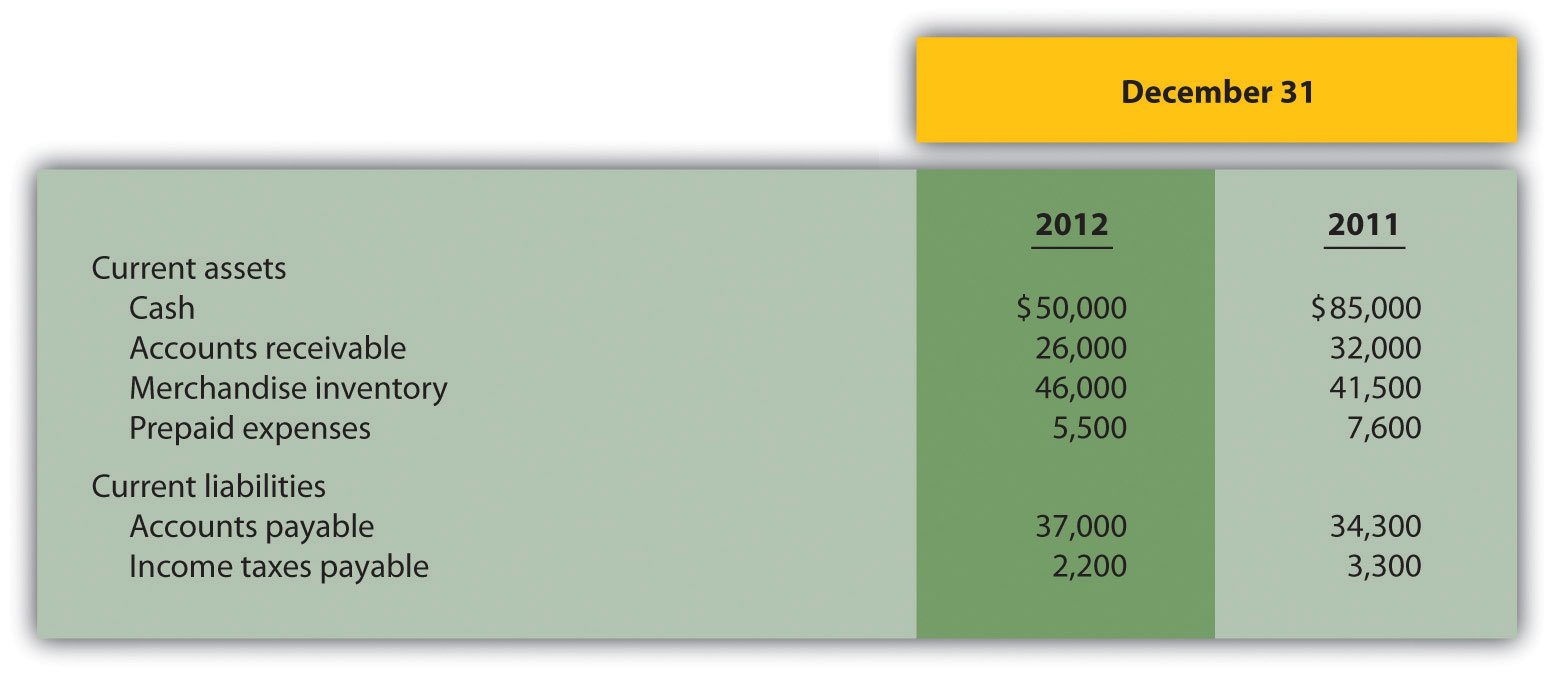

Required:
- Using the indirect method, prepare the operating activities section of the statement of cash flows for Mills Company for the year ended December 31, 2012. Use the format presented in Figure 12.5.
- Calculate the following cash measures:
- Operating cash flow ratio
- Capital expenditure ratio
- Free cash flow
Problems
- Classifying Cash Flows. Big Sky, Inc., had the following transactions during 2012:
- Issued common stock for $150,000 cash
- Paid $25,000 in principal on previously issued bonds
- Paid $300,000 in salaries and wages to employees
- Sold property for $45,000 cash
- Paid $3,000 in cash dividends
- Received $600,000 from customers for cash sales
- Paid $350,000 cash for merchandise
- Converted bonds into common stock
- Purchased a building for $850,000 cash
- Paid $310,000 for operating expenses
- Received $200,000 cash for the sale of long-term investments
- Issued bonds for $87,000 cash
- Repurchased common stock for $35,000 cash
- Issued common stock to purchase land valued at $450,000
- Paid $10,000 cash for interest on notes payable
Required:
Classify each transaction as one of the following: operating activity, investing activity, financing activity, or noncash transaction. Briefly explain your answer for each item.
- Prepare a Statement of Cash Flows, Indirect Method. Glenbrook Company’s most recent balance sheet, income statement, and other important information for 2012 are presented as follows.
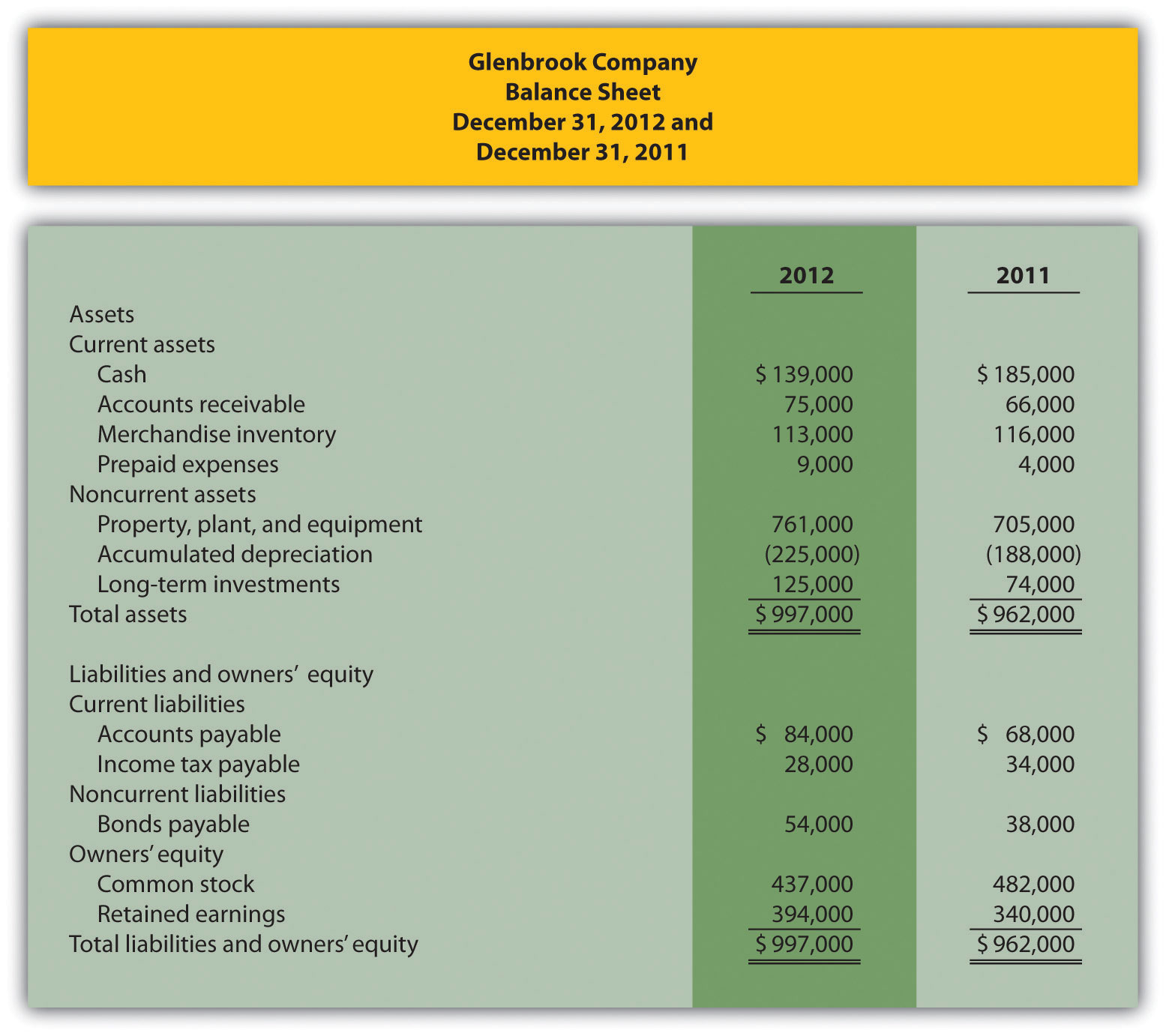
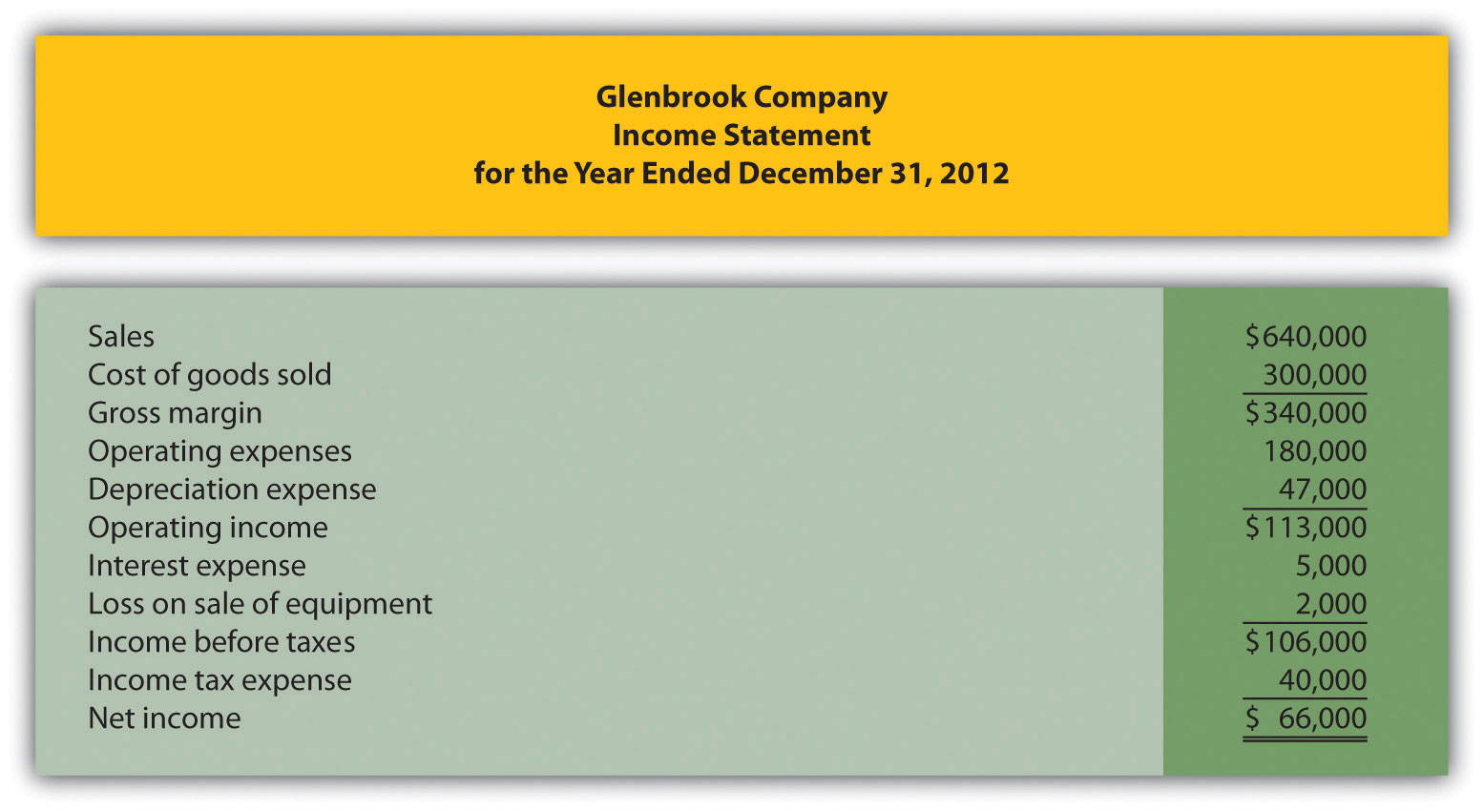
Additional data for 2012 are as follows:
- Sold equipment with a book value of $30,000 (= $40,000 cost − $10,000 accumulated depreciation) for $28,000 cash
- Purchased equipment for $96,000 cash
- There were no sales of long-term investments (Hint: Solve for the purchase of long-term investments.)
- Issued bonds for $16,000 cash
- Repurchased common stock (treasury shares) for $45,000 cash
- Declared and paid $12,000 in cash dividends
Required:
- Use the four steps described in the chapter to prepare a statement of cash flows for the year ended December 31, 2012, using the indirect method. Refer to the format presented in Figure 12.8.
- Briefly describe the major changes in cash identified in the statement of cash flows.
- (Appendix) Prepare a Statement of Cash Flows, Direct Method. Refer to the information for Glenbrook Company presented in the previous problem.
Required:
- Use the four steps described in the chapter, including the appendix, to prepare a statement of cash flows for the year ended December 31, 2012, using the direct method. Refer to the operating activities section format using the direct method presented in Figure 12.12 and the adjustment rules for the direct method presented in Figure 12.13.
- Briefly describe the major changes in cash identified in the statement of cash flows.
- Prepare and Analyze a Statement of Cash Flows, Indirect Method. Travel Supply, Inc.’s most recent balance sheet, income statement, and other important information for 2012 are presented as follows.
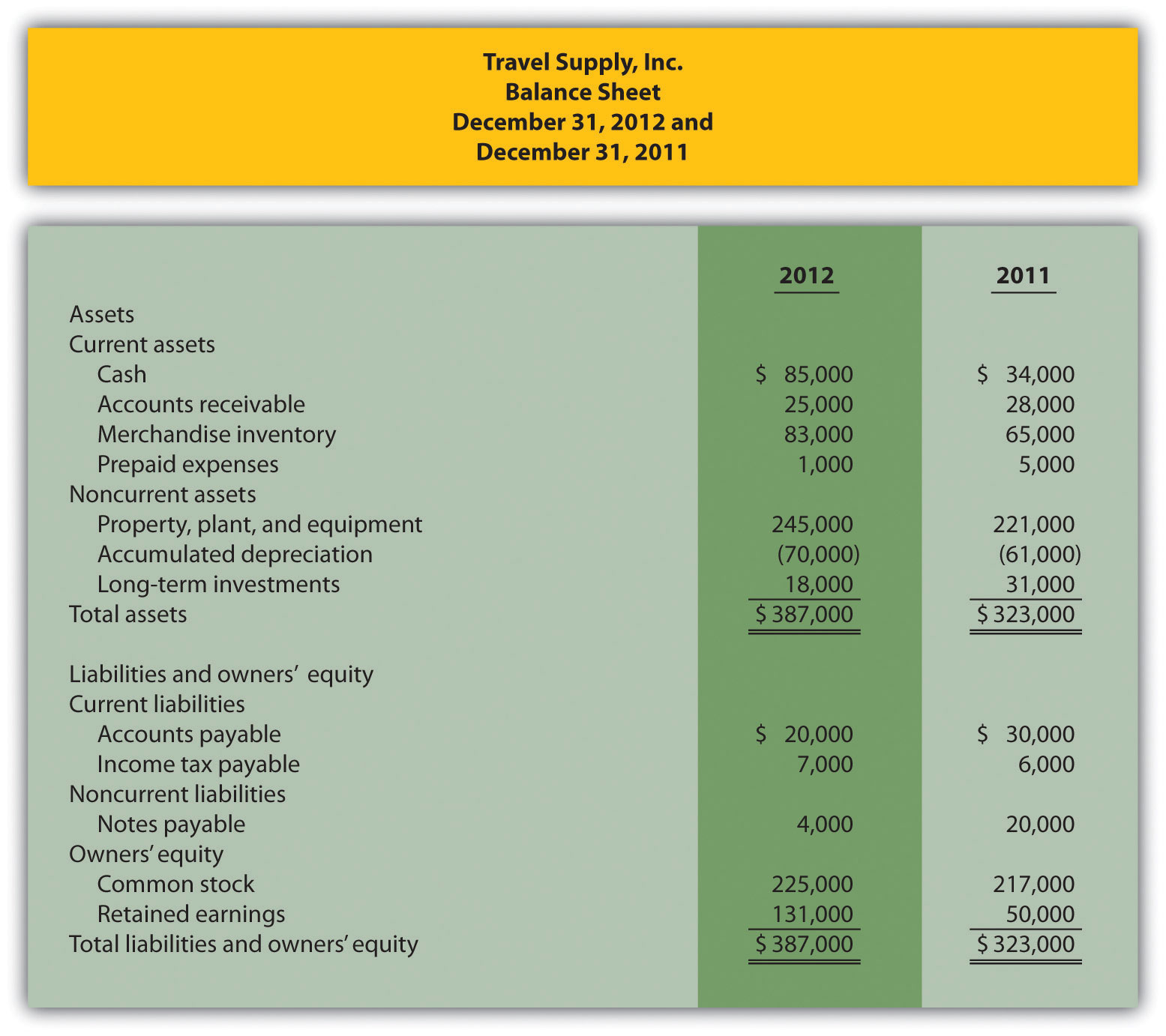
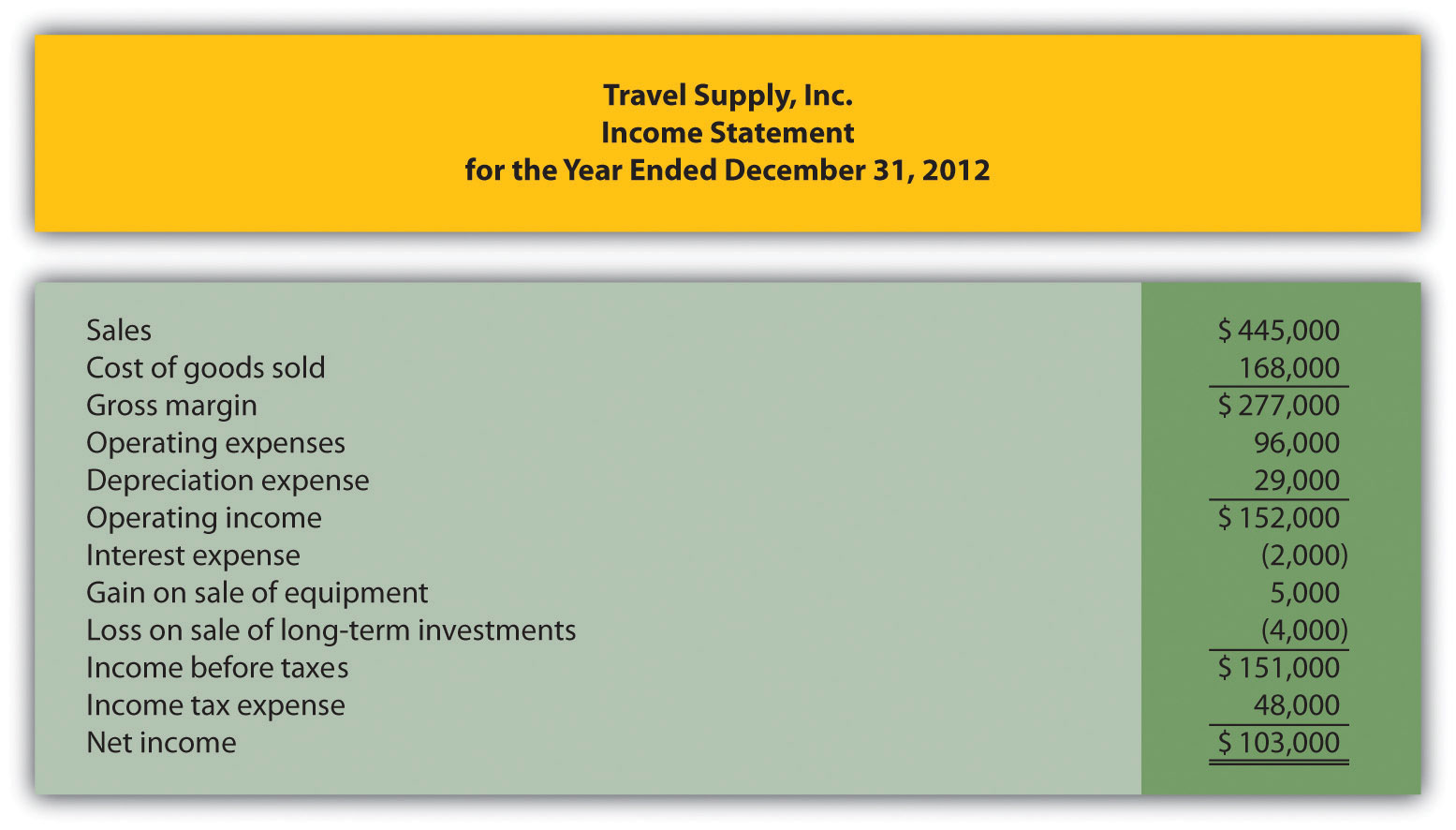
Additional data for 2012 are as follows:
- Sold equipment with a book value of $3,000 (= $23,000 cost − $20,000 accumulated depreciation) for $8,000 cash
- Purchased equipment for $47,000 cash
- Sold long-term investments for $9,000 cash and these investments had an original cost of $13,000
- Paid $16,000 cash for principal amount on notes payable
- Issued common stock for $8,000 cash
- Declared and paid $22,000 in cash dividends
Required:
- Use the four steps described in the chapter to prepare a statement of cash flows for the year ended December 31, 2012, using the indirect method. Refer to the format presented in Figure 12.8.
- The owner of Travel Supply, Inc., wants to know why cash only increased $51,000 even though the company had net income of $103,000, issued common stock for $8,000, and sold long-term investments for $9,000. Use the information in the statement of cash flows to briefly explain why cash only increased $51,000.
- Prepare a Statement of Cash Flows, Indirect Method; Analyze Using Cash Ratios. Nolan Company’s most recent balance sheet, income statement, and other important information for 2012 are presented as follows.
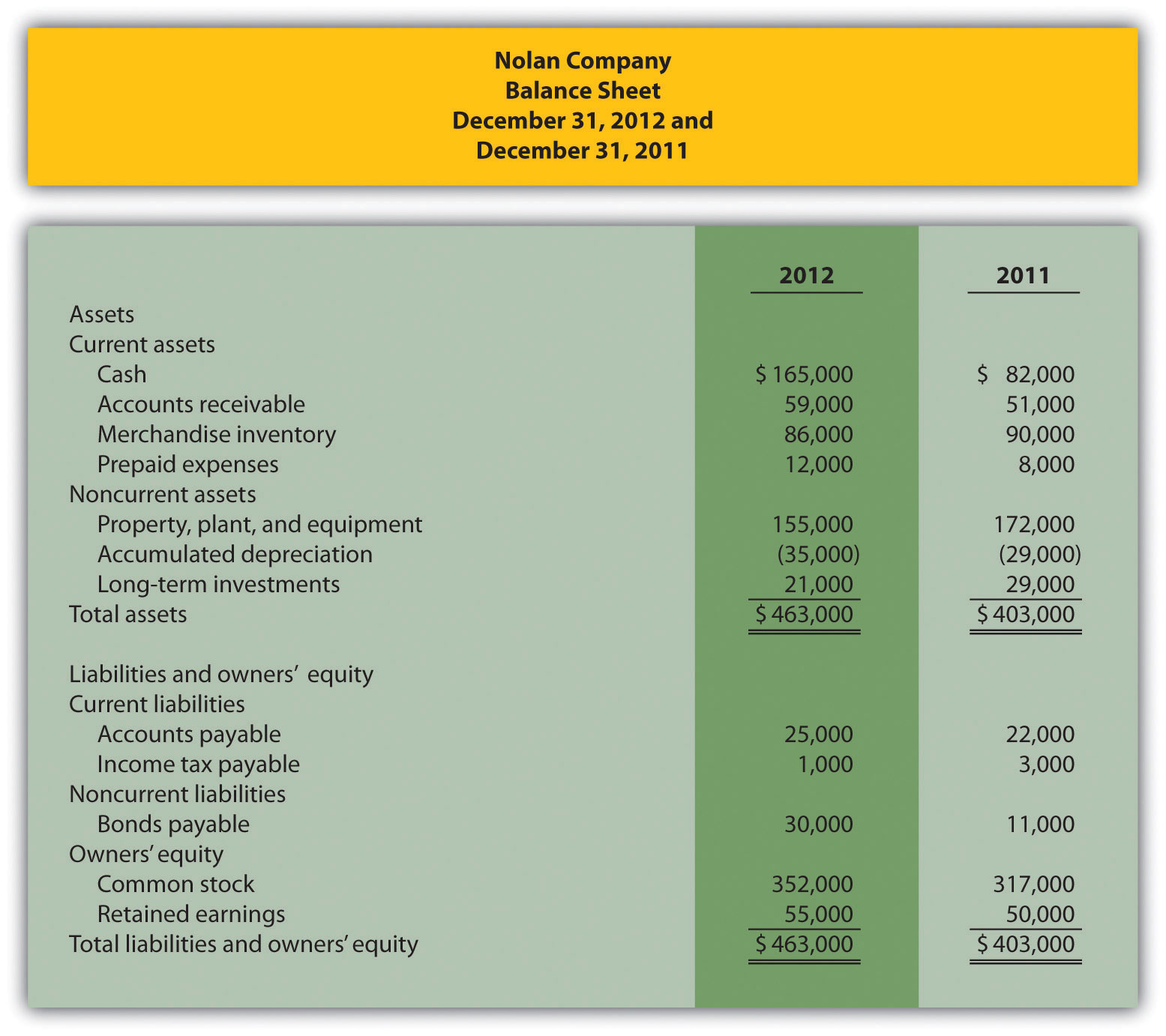
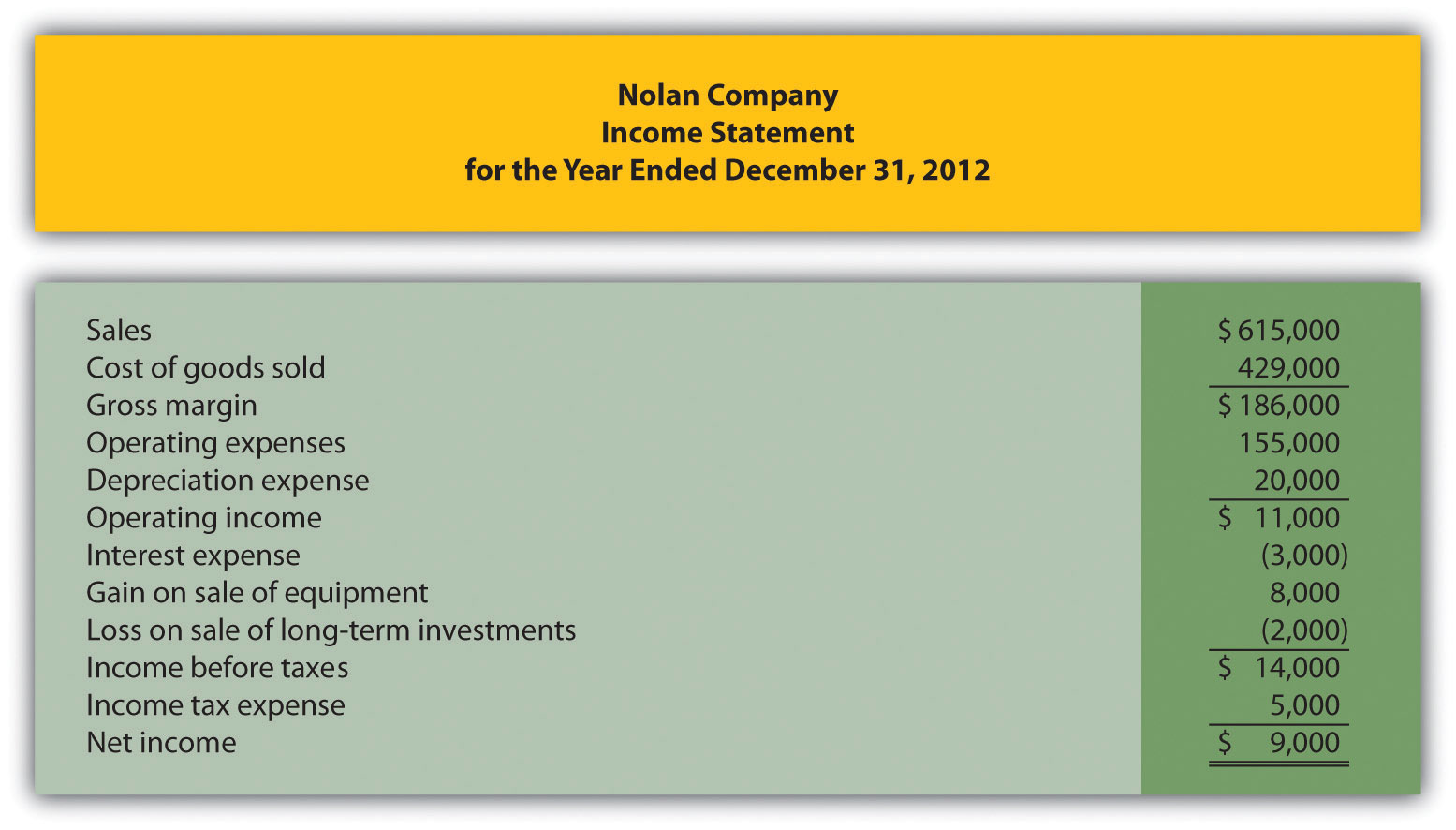
Additional data for 2012 are as follows:
- Sold equipment with a book value of $13,000 (= $27,000 cost − $14,000 accumulated depreciation) for $21,000 cash
- Purchased equipment for $10,000 cash
- Sold long-term investments for $6,000 cash and these investments had an original cost of $8,000
- Received $19,000 cash related to notes payable
- Issued common stock for $35,000 cash
- Declared and paid $4,000 in cash dividends
Required:
- Use the four steps described in the chapter to prepare a statement of cash flows for the year ended December 31, 2012, using the indirect method. Refer to the format presented in Figure 12.8.
- The owner of Nolan Company wants to know how cash more than doubled, from $82,000 to $165,000, given the company’s modest net income of $9,000. Use the information in the statement of cash flows to briefly explain why cash more than doubled.
- Calculate the following cash measures:
- Operating cash flow ratio
- Capital expenditure ratio (Hint: Capital expenditures can be found in the investing activities section of the statement of cash flows prepared in part a.)
- Free cash flow
- (Appendix) Prepare a Statement of Cash Flows (Direct Method); Analyze Using Cash Ratios. Refer to the information for Nolan Company presented in the previous problem.
Required:
- Use the four steps described in the chapter, including the appendix, to prepare a statement of cash flows for the year ended December 31, 2012, using the direct method. Refer to the operating activities section format using the direct method presented in Figure 12.12, and the adjustment rules for the direct method presented in Figure 12.13.
- Briefly describe the major changes in cash identified in the statement of cash flows.
- Calculate the following cash measures:
- Operating cash flow ratio
- Capital expenditure ratio (Hint: Capital expenditures can be found in the investing activities section of the statement of cash flows prepared in part a.)
- Free cash flow
- Prepare and Analyze a Statement of Cash Flows, Indirect Method and Direct Method. Ritz Company’s most recent balance sheet, income statement, and other important information for 2012 are presented as follows.
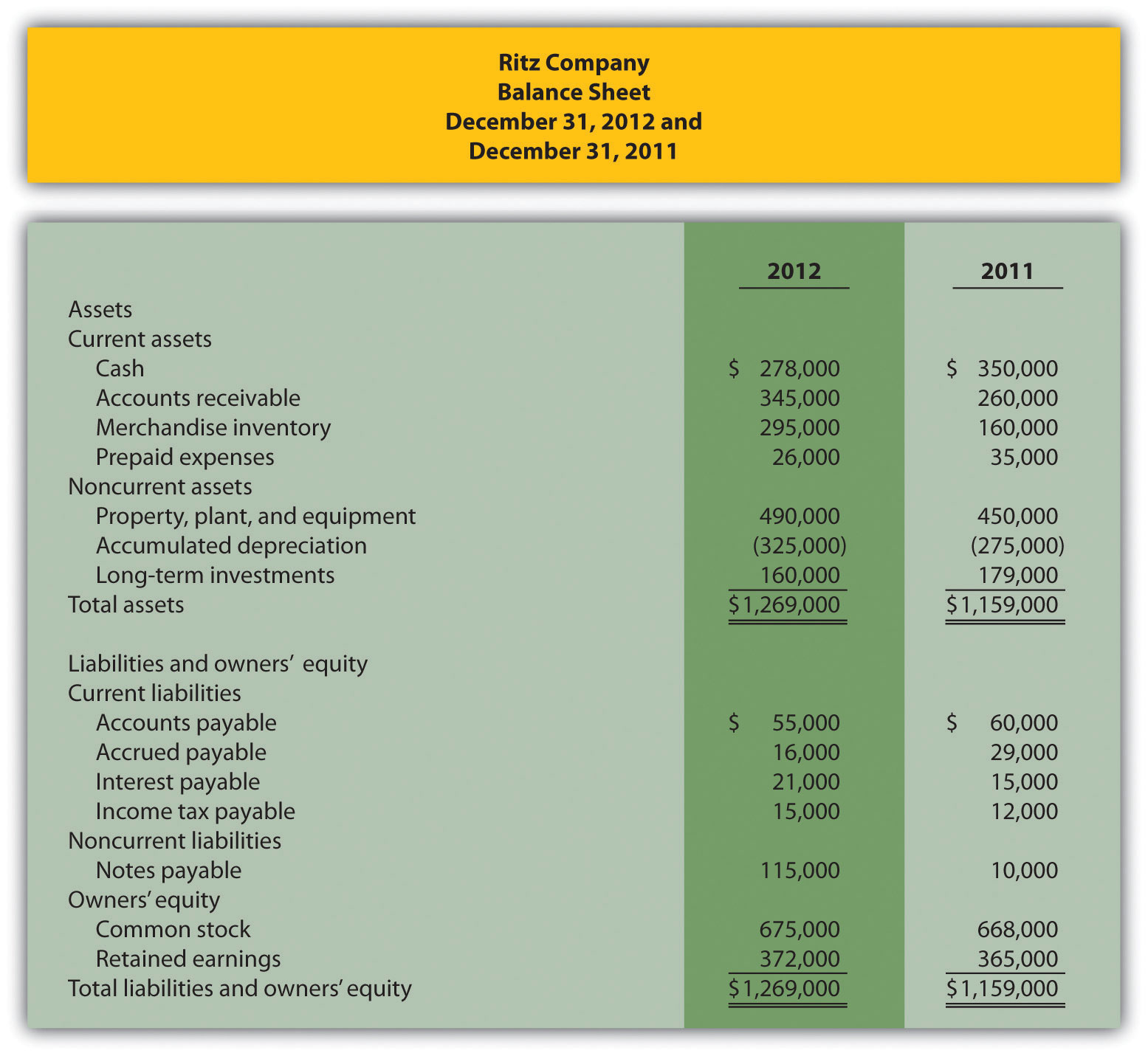

Additional data for 2012 are as follows:
- Sold equipment with a book value of $15,000 (= $100,000 cost − $85,000 accumulated depreciation) for $32,000 cash
- Purchased equipment for $140,000 cash
- Sold long-term investments for $23,000 cash and these investments had an original cost of $24,000
- Purchased long-term investments for $5,000 cash
- Issued bonds for $105,000 cash
- Issued common stock for $7,000 cash
- Declared and paid $11,000 in cash dividends
Required:
- Use the four steps described in the chapter to prepare a statement of cash flows for the year ended December 31, 2012, using the indirect method. Refer to the format presented in Figure 12.8.
- The owner of Ritz Company wants to know why cash decreased from $350,000 to $278,000 given the company’s net income of $18,000. Use the information in the statement of cash flows to briefly explain why cash decreased.
- Use the four steps described in the chapter, as well as in the appendix, to prepare a statement of cash flows for the year ended December 31, 2012, using the direct method. Refer to the operating activities section format using the direct method presented in Figure 12.12 and the adjustment rules for the direct method presented in Figure 12.13.
One Step Further: Skill-Building Cases
- Southwest Airlines Statement of Cash Flows. Refer to the Note 12.3 "Business in Action 12.1" How could Southwest’s cash balance increase by $147,000,000 even though the company generated $1,600,000,000 in cash from operating activities?
- Home Depot and Lowe’s Statement of Cash Flows. Refer to the Note 12.10 "Business in Action 12.2" How much cash was generated from daily activities for each company? Where was the bulk of this cash spent for each company?
- Internet Project: Statement of Cash Flows. Using the Internet, find the most recent annual report for a company of your choice. Print the statement of cash flows and include it with your response to the following requirements.
Required:
- How much cash was provided by (used by) operating activities? Compare this amount to net income (often called net earnings) and explain why the two are different.
- What method did the company use to prepare the operating activities section, direct or indirect? Explain.
- How much cash was provided by (used by) investing activities? Which activity in this section had the biggest impact on investing cash flows?
- How much cash was provided by (used by) financing activities? Which activity in this section had the biggest impact on financing cash flows?
- Calculate free cash flow. Did the company generate enough cash from operating activities to cover capital expenditures? Explain.
- Dividend Cash Flow at Microsoft. Refer to the Note 12.23 "Business in Action 12.4" How much did Microsoft pay in dividends during the second quarter of 2005? Why did Microsoft pay such a large dividend to shareholders?
- Cash Flows at Amazon.com. Refer to the Note 12.34 "Business in Action 12.5" Why does Amazon.com prefer to use free cash flow per share rather than earnings per share to evaluate the company?
- Group Activity: Analyzing General Motors Statement of Cash Flows.The following information is from the consolidated statement of cash flows for General Motors (GM) for the year ended December 31, 2005 (in millions).

Required:
An investment advisor recently reviewed GM’s statement of cash flows and balance sheet and stated: “GM is doing great! They are sitting on cash of more than $30,000,000,000. There is no cash flow problem with this company!” In groups of two to four students, decide whether you agree with this statement. Support your conclusion with an analysis of GM’s cash flows.
Comprehensive Case
- Ethics: Manipulating Data to Reach Target Cash Flow. Country Market, Inc., sells food and beverage products at its five retail stores. The company’s fiscal year ends on December 31. The company’s president and CEO, Jean Williams, just received a draft of the statement of cash flows from the controller, Stan Walker. Jean is very interested in the results since a significant part of her annual bonus depends on generating at least $400,000 in cash from operating activities. A summary of the statement is provided in the following:

Becky Swanson, the chief financial officer (CFO) for Country Market, is approached by Jean:
Jean: Becky, have you seen the statement of cash flows? Becky: No, not yet. Last I heard Stan was just about done with it. Jean: He just dropped off a copy for my review. Becky: Excellent. How does it look? Jean: Overall it looks fine, but something must be wrong with the operating activities number. I assumed it would be well above $400,000. Can you take a look at it and make sure we exceed $400,000? Becky: I’ll do what I can. Jean: Great. I knew I could depend on you. Shortly after this discussion, Becky returned with revised numbers: Becky: Jean, here is the corrected statement of cash flows (see as follows). I was able to reclassify a portion of cash received from the sale of long-term investments to the operating activities section to get to $403,000. Jean: Excellent! Thanks, Becky, I knew you could do it! 
Required:
- What impact did the reclassification of cash flows have on the total net increase in cash? Explain.
- Are Becky’s actions ethical? Explain.
- If you were the CFO, how would you handle Jean’s request? (If necessary, review the presentation of ethics in Chapter 1 for additional information.)

